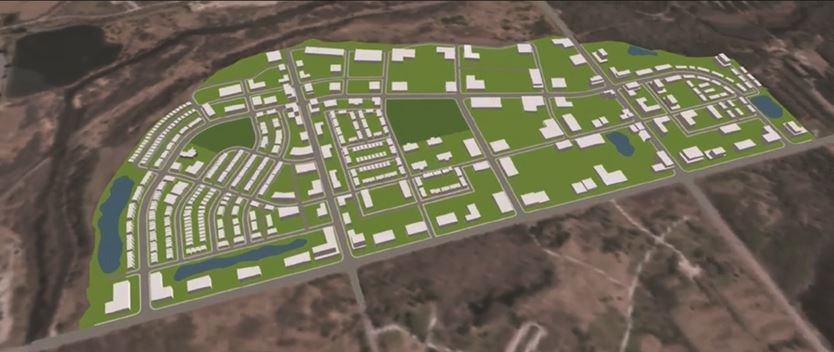Original plan saw city buying land from the province, then selling it themselves; if new plan approved, land could be in developers’ hands by next spring
The city could be changing course on its plans to develop the former jail lands — and it could be in line with what it originally wanted.
According to a report to be in front of councillors at the March 4 meeting of the committee of the whole, city staff are recommending that councillors rescind plans made in 2017, that would see the city buy 98 hectares of land, which includes the Guelph Research Station property and the land where the Wellington Detention Centre once stood, then sell it to developers by the end of this year so as to give the city direct oversight on what would be built there.
This new project would one day become the Guelph Innovation District, with plans for thousands of new homes and jobs.
The property housing the former Guelph Correctional Facility, which is also part of the GID project, was not included in that plan.
Staff are now saying the province has changed its mind on how to sell those lands, and it is in line with what the city originally wanted.
“There was a note put forth to the province, suggesting that as the province sells off these surplus lands that it would be great to realize the vision for the Guelph Innovation District,” Helen Loftin, the city’s general manager of business development and enterprise services, says of the suggested approach when the GID’s secondary plan was approved in 2014.
“The province took time to respond back with their preferred approach at the time, which was the city acquires the property and then sells it.”
Loftin adds that the approach approved by council in 2017 has now been found to not be in line with council’s direction that the city not lose money on the land purchase deals with the province.
“There were some costs involved in this,” Loftin says.
“Things like the land transfer tax, as well as some of the other costs around staff time and legal, could not be recouped in the process. So we were at an impasse.”
Loftin adds that with staff coming up against a wall, Infrastructure Ontario came around on the city’s original idea of having the province sell the land, but that the city remain involved.
According to the staff report, this change would see the province sell the land on the open market, with the city providing “content for the marketing strategy and evaluation criteria for inclusion in the province’s disposition of land.”
This plan would include the sale of the lands that previously would have been purchased by the city, as well as the 38-acre Guelph Correctional Facility lands.
As for how much input the city will have on who ends up buying the land from the province, Loftin says she is hopeful the city will be a part of the evaluation team.
“There is an upcoming meeting with Infrastructure Ontario and their real estate agency, and at that point in time we will be reiterating the top criteria of the GID secondary plan,” she says.
“At that point in time, we’ll get an idea of the extent to which the city will be allowed to participate in the evaluation process.”
City staff say the province is not looking to roll its plan out slowly either. It’s looking to have marketing materials and evaluation criteria prepared by May, the land on the market by June and the transaction between the province and the land’s new owner or owners by March 2020.
The original city plan would have seen the city put more money up front, with council voting in 2017 to use up to $10 million in reserve funds to cover the costs of the refundable deposit and the city’s eventual project to garner requests for proposals from developers.
Loftin says those reserve funds have not been spent.
This new approach would have a much lower impact on the city’s pocketbook, with staff recommending that between $25,000 and $50,000 in additional operating expenses be approved to move forward with this new plan. This would be on top of the $185,000 in operating expenses already spent or committed to the GID project.
The secondary plan for the GID was approved by council in May 2014. Under that plan, 436 hectares of land would be used to build homes for 7,000 people, create 9,000 new jobs in the environmental and agriculture technology sectors, communications and creative media.
The secondary plan calls for creation of a compact, mixed-use community; a research and development “cluster” which attracts employment and residential uses that would be anchored by a mixed-use urban village and a main street; building on natural and cultural heritage resources of the area; and “working towards carbon neutrality through building performance standards, on- and offsite renewable energy and potential district energy,” according to city reports at the time.

